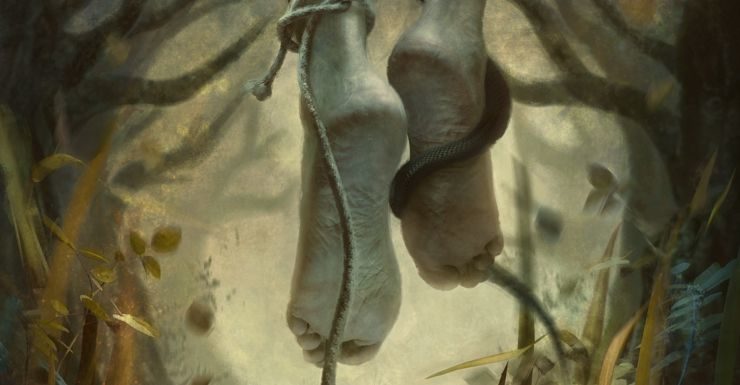Summer. Pfft. So overrated.
Some people look at the ocean and see a wonderland of surfing and swimming. But I know better. There, there be man-eating sharks and terrible Eldritch horrors waiting to loom up from a darkened trench. Too much sunshine causes skin cancer and sand gets into the most annoying places.
Keep your shiny, happy beach reads. I’ll be sitting safely in the shade of a tree, keeping myself cool with the riches of the season: an abundance of new horror and Weird titles by genre vets and exciting new voices.
She Said Destroy by Nadia Bulkin
 Horror is best when it’s at an extreme that has nothing to do with levels of gore. Great horror happens when a story reveals some profoundly personal truth or when it reflects something ugly we can recognize on a broad, systemic scale. Indonesian-born author Nadia Bulkin writes what she describes as “socio-political horror” and it colors many of the stories in a debut collection that will surely be recognized as one of the year’s sharpest. She Said Destroy opens with the Shirley Jackson Award-nominated “Intertropical Convergence Zone,” imagining an alternate history of the Suharto presidency, where everyday people are held sway to a dictator who craves the most terrifying kind of love. Indonesia also serves as the background for “Red Goat, Black Goat,” where class divides press upon a poor woman hired to babysit two children under a curse. A family curse also anchors the final, relentless story, one original to this collection, “No Gods, No Monsters,” where every family has its demons and some demons are more real than others.
Horror is best when it’s at an extreme that has nothing to do with levels of gore. Great horror happens when a story reveals some profoundly personal truth or when it reflects something ugly we can recognize on a broad, systemic scale. Indonesian-born author Nadia Bulkin writes what she describes as “socio-political horror” and it colors many of the stories in a debut collection that will surely be recognized as one of the year’s sharpest. She Said Destroy opens with the Shirley Jackson Award-nominated “Intertropical Convergence Zone,” imagining an alternate history of the Suharto presidency, where everyday people are held sway to a dictator who craves the most terrifying kind of love. Indonesia also serves as the background for “Red Goat, Black Goat,” where class divides press upon a poor woman hired to babysit two children under a curse. A family curse also anchors the final, relentless story, one original to this collection, “No Gods, No Monsters,” where every family has its demons and some demons are more real than others.
Paul Tremblay, an author I respect immensely, writes a glowing foreword that is probably the envy of most new horror writers. “These incredibly taut stories are alive, intelligent, humane, and so of our time as to be prophetic,” he raves. I truly couldn’t have said it better myself. I’ll save a special final, shout-out to Bulkin’s “Violet is the Color of Your Energy,” which dips into Lovecraft lore, and like Victor LaValle and Ruthanna Emrys, makes it indelibly her own and so, so vivid.
Calls for Submission by Selena Chambers
 If you’re in the mood for something gothic, something both lovely and grotesque, this debut story collection from Pushcart Award-nominated Serena Chambers will envelope you in a bone-deep autumn chill. Most of the stories compiled here were written for themed anthologies—the title Calls for Submission alludes to that—but no matter the market, Chambers’ artful prose and her personal obsessions ring consistent and clear. Chambers’ scholarly fascination with Edgar Allan Poe reveals itself in a “Of Parallel and Parcel,” wherein an insecure Virginia Poe steals a letter meant for her intended and with it seals her husband’s fate. Poe fascination is itself a form of disease in “Dr. Lambshead’s Dark Room.” The decadent and intellectual combine in ways that remind me of K.J. Bishop and Molly Tanzer, the latter of which provides another enviable introduction.
If you’re in the mood for something gothic, something both lovely and grotesque, this debut story collection from Pushcart Award-nominated Serena Chambers will envelope you in a bone-deep autumn chill. Most of the stories compiled here were written for themed anthologies—the title Calls for Submission alludes to that—but no matter the market, Chambers’ artful prose and her personal obsessions ring consistent and clear. Chambers’ scholarly fascination with Edgar Allan Poe reveals itself in a “Of Parallel and Parcel,” wherein an insecure Virginia Poe steals a letter meant for her intended and with it seals her husband’s fate. Poe fascination is itself a form of disease in “Dr. Lambshead’s Dark Room.” The decadent and intellectual combine in ways that remind me of K.J. Bishop and Molly Tanzer, the latter of which provides another enviable introduction.
Not all of the stories submit to the horror classification, but remain unsettling nonetheless. Chambers co-wrote, with Jeff VanderMeer, The Steampunk Bible, and her take on the genre here puts transhumanism at the center of an Orientalist fantasy of the Ottoman Empire. “The United States of Kubla Khan” imagines a gonzo journalist meeting a cable news addict in a scathing, despairing dream for America. A triptych of short pieces combine a bottle of wine with sketches of transition. Yet my favorite story of the bunch is decidedly macabre: the World Fantasy Award-nominated “The Neurastheniac,” which was written for Joe Pulver’s wonderful Robert Chambers King in Yellow anthology, Cassilda’s Song. Helen Heck emerges as a cult figure and her found notes before her suicide make for a surreal and impossibly dark poetry, no matter if you’re familiar with Carcosa or not. I also enjoyed the inclusion of the author’s notes for each tale, as it gave a detailed peek behind the curtain of an artistic process that looks (and reads) easy, but is definitely not.
Beneath by Kristi DeMeester
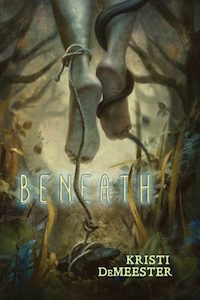 I love, love, love a good cult story and DeMeester, who has already made an impression on the horror community with her short fiction, delivers a twisted and compelling debut novel. Cora Mayburn, a journalist, visits a late-80s Appalachian community to write an article on a snake-handling church. What she finds is a town in thrall to something even more monstrous; an ancient and powerful god has corrupted a teenage girl, already vulnerable in her newfound sexuality that is at odds with her conservative faith. Cora, herself a victim of childhood abuse at the hands of a priest, is righteous in her anger with a handsome pastor who seems to be grooming the young girl for sinister purpose and skeptical of religion until certain events make her question everything.
I love, love, love a good cult story and DeMeester, who has already made an impression on the horror community with her short fiction, delivers a twisted and compelling debut novel. Cora Mayburn, a journalist, visits a late-80s Appalachian community to write an article on a snake-handling church. What she finds is a town in thrall to something even more monstrous; an ancient and powerful god has corrupted a teenage girl, already vulnerable in her newfound sexuality that is at odds with her conservative faith. Cora, herself a victim of childhood abuse at the hands of a priest, is righteous in her anger with a handsome pastor who seems to be grooming the young girl for sinister purpose and skeptical of religion until certain events make her question everything.
Shocking violence and visceral terror punctuate a tale that uncoils a nest of deadly fundamentalism, feminist fury, and a sensitive empathy for abuse survivors. Beneath winds towards an ending that is as disturbing and tragic as it is strangely empowering. It’s one of my favorite novels so far this year.
Mapping the Interior by Stephen Graham Jones
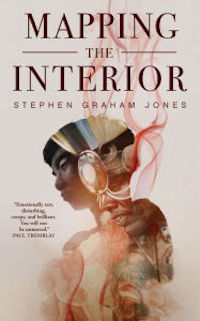 As he did in his ferocious Shirley Jackson Award-nominated novel Mongrels, Steven Graham Jones’ latest shows him as a master of voice, particularly capturing the uncertainty and poignancy of marginalized youths. Here, Junior, a young Native American boy, sees the ghost of his father—only his dad is not the drunken, lost man he was in life, but “better:” the Native American ideal of what he could have been. Is the shadowy fancydancer, in his porcupine quills and beads, really a ghost of a father figure Junior never had or is this haunting actually a demon, intent on harming Junior’s younger brother and struggling mother? Is there a difference?
As he did in his ferocious Shirley Jackson Award-nominated novel Mongrels, Steven Graham Jones’ latest shows him as a master of voice, particularly capturing the uncertainty and poignancy of marginalized youths. Here, Junior, a young Native American boy, sees the ghost of his father—only his dad is not the drunken, lost man he was in life, but “better:” the Native American ideal of what he could have been. Is the shadowy fancydancer, in his porcupine quills and beads, really a ghost of a father figure Junior never had or is this haunting actually a demon, intent on harming Junior’s younger brother and struggling mother? Is there a difference?
The harm a toxic parent can do their own children and a child’s reach towards understanding a parent’s fallibility plays out in an extended metaphor that, in the final act, takes a surprising genre twist and continues on for a final, further twist; that of a knife in readers’ hearts as a reflective epilogue provides no tidy moral lesson, no shining triumph. It’s short and sobering and, despite its dusty Texas setting, chilled me to the core.
Shadows & Tall Trees 7 ed. by Michael Kelly
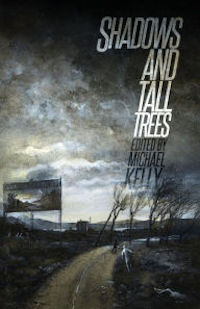 Much like Undertow’s newer series, The Year’s Best Weird Fiction, Shadows & Tall Trees is a premier publication for literary, difficult-to-pigeonhole horror. All of the short stories are original to this new collection and the roster is an impressive mix of new and fan-favorite authors including Brian Evenson, Steve Rasnic Tem, and Simon Strantzas. Brian Evenson (A Collapse of Horses, The Warren) opens the anthology with an unsettling story about a film whose production is more difficult than anyone might have known to imagine. The next story, M. Rickert’s “Everything Beautiful is Terrifying,” also involves a film about the notorious murder of a teen girl and the cult following it inspires, and that fandom’s effect on the murder victim’s surviving best friend. It’s a sad and beautiful story, one of my favorites in the collection, and makes for an interesting companion to Evenson’s preceding piece.
Much like Undertow’s newer series, The Year’s Best Weird Fiction, Shadows & Tall Trees is a premier publication for literary, difficult-to-pigeonhole horror. All of the short stories are original to this new collection and the roster is an impressive mix of new and fan-favorite authors including Brian Evenson, Steve Rasnic Tem, and Simon Strantzas. Brian Evenson (A Collapse of Horses, The Warren) opens the anthology with an unsettling story about a film whose production is more difficult than anyone might have known to imagine. The next story, M. Rickert’s “Everything Beautiful is Terrifying,” also involves a film about the notorious murder of a teen girl and the cult following it inspires, and that fandom’s effect on the murder victim’s surviving best friend. It’s a sad and beautiful story, one of my favorites in the collection, and makes for an interesting companion to Evenson’s preceding piece.
Things get less cinema-centric, but no less uncanny from there as horror, as a genre and as an emotion, is explored in broad strokes. There’s the straightforward horror of a family curse elevated to a stinging revenge tale in “The Water-Kings” by Singaporean author Manish Melwani. There’s the more nebulous, disorientating decluttering of Rebecca Kuder’s “Curb Day.” Strong offerings are also on hand from Robert Levy, Laura Mauro, and Michael Wehunt, who is becoming one of my favorite new voices. Not every story will appeal to every reader’s definition of frightening—horror is largely subjective—but the quality of writing is overwhelmingly consistent throughout, making Shadows & Tall Trees 7 one of the stand-out anthologies of 2017.
Weird Whispers
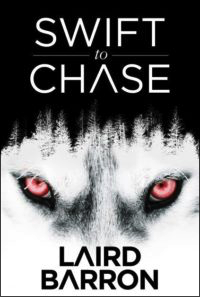 Tickets are still available for NecronomiCon Providence 2017! This New England con began as a festival and discussion for all things Lovecraft, but has since evolved into a symposium on the Weird. Special Guests of Honor include Nnedi Okorafor, Peter Straub, Kij Johnson, Stephen Graham Jones and cult film director Richard Stanley (Hardware, The Island of Dr. Moreau—before Val Kilmer and Marlon Brando’s ego got Stanley fired from set and made him seek refuge on a nearby blueberry farm. You can’t make this up. There’s a whole fantastically hilarious, bitter documentary about it on Netflix streaming right now.) Expect movie screenings, a party or two, the launch of Dim Shores’ new Weird anthology Looming Low, and lots of panel discussions on contemporary horror, all within walking distance of Lovecraft’s old haunts.
Tickets are still available for NecronomiCon Providence 2017! This New England con began as a festival and discussion for all things Lovecraft, but has since evolved into a symposium on the Weird. Special Guests of Honor include Nnedi Okorafor, Peter Straub, Kij Johnson, Stephen Graham Jones and cult film director Richard Stanley (Hardware, The Island of Dr. Moreau—before Val Kilmer and Marlon Brando’s ego got Stanley fired from set and made him seek refuge on a nearby blueberry farm. You can’t make this up. There’s a whole fantastically hilarious, bitter documentary about it on Netflix streaming right now.) Expect movie screenings, a party or two, the launch of Dim Shores’ new Weird anthology Looming Low, and lots of panel discussions on contemporary horror, all within walking distance of Lovecraft’s old haunts.- Of course the in-progress new season of Twin Peaks on Showtime is already planning on leaving you with a lot of questions. (At this point, I’m questioning why this Dougie side-quest for Agent Cooper is taking so damn long.) Luckily, Mark Frost and Flatiron Books have announced The Final Dossier, a follow-up book to the handsome The Secret History of Twin Peaks, which will be available in October. Will we get less UFO mythology and more intel on what Evil-Cooper was up to during his 25 years of freedom?
- I read a lot of great horror fiction in the fall and winter that I didn’t get to review. Some late 2016 and early 2017 titles that are not to be missed include one of my very favorite reads of the year, Agents of Dreamland by Caitlin R. Kiernan, which mixes death cults, fungus, and Elder Gods in a grim, compelling novella that left me begging for mercy and for more. John Langan’s The Fisherman, recent winner of the Bram Stoker Award for Best Novel, travels back and forth in time to an evil that has settled in the Hudson Valley and contains a genuinely chilling story-within-a-story, pulling together a powerful statement on grief. On the anthology front, I enjoyed The Madness of Dr. Caligari, edited by Joe Pulver. I got a bit burnt out on Lovecraft last year, so it was refreshing to read a themed anthology centered around a 1920 German Expressionist horror movie. The collection’s standouts include Damien Angelica Walters’ Daphne du Maurier-inspired “Take a Walk in the Night, My Love” and Molly Tanzer’s “That Nature Which Peers out in Sleep,” centered around a Caligari-fetishist, as well as a new story from Michael Cisco. Finally, the short stories in Laird Barron’s ambitious collection, Swift to Chase, can be read as standalones, but work best as pieces of an original cosmic conspiracy populated by pulp heroine Jessica Mace, leeches, and a cameo from Andy Kaufman that made my skin crawl.
- Forthcoming titles to preorder: the Table of Contents for The Year’s Best Weird, Vol. 4 edited by Michael Kelly and Helen Marshall is public and includes “Breaking Water” by Indrapramit Das, first published right here on Tor.com. You’re also going to need Carmen Maria Machado’s debut collection Her Body and Other Parties and The Dream Operator by Mike O’Driscoll, which offers a mix of horror, noir, and dark fantasy.
Theresa DeLucci is a regular contributor to Tor.com, covering book reviews, gaming, and TV, including HBO’s Game of Thrones. She’s also discussed entertainment for Boing Boing, Den of Geek, and Wired.com’s Geek’s Guide to the Galaxy. She is a graduate of the 2008 Clarion West Writers’ workshop, and her short fiction has appeared in ChiZine. Follow her on Twitter.










